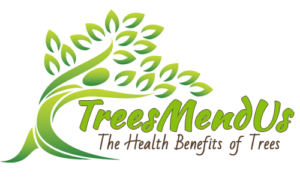Christiane Wolf, MD, PhD is a former physician and an internationally known mindfulness and Insight (Vipassana) meditation teacher. She is passionate about translating ancient wisdom teachings into accessible and applicable modern-day language. She aims to live from the heart informed by the brain and inspires her students to explore the same.

She is the author of “Outsmart Your Pain – Mindfulness and Self-Compassion to Help You Leave Chronic Pain Behind” and the co-author of the classic training manual for mindfulness teachers “A Clinician’s Guide To Teaching Mindfulness”. Christiane is the lead-consultant and teacher trainer for the VA’s (US Department of Veteran Affairs) National Mindfulness Facilitator Training and a senior teacher at InsightLA.
She is the mom of three amazing humans and can usually be found in the Los Angeles area training for ultramarathons and triathlons.
Interview time stamps:
3:38 Originally I just wanted to provide a print out for patients and providers of what mindfulness and self compassion are and where to find resources. We ended up with a user friendly book.
4:45 When our body goes into pain, this is the body’s priority: paying attention to pain. This gets complicated with chronic pain.
6:48 Our body learns pain. In chronic pain our body becomes over protective.
When we say the pain is killing me today, be careful because your body is listening.
8:00 When we are in pain, the mind goes into rumination, replays stories of what happened to us.
10:00 We have a story with a history. What did you do? what are you regretting? We have a story of the past and a story of the future. With each thought comes a particular emotion.
10:57 We might have a future story – we might know that the condition we have is progressive. We might worry that the pain will not go away….so you will not be able to go on hikes, lift your grandchildren…..
11:47 When the pain comes rushing in, this is a reminder of our past and future story: fear, frustration, and worry set in.
12:08 The past is over and the future isn’t here. You might recognize your thoughts and say “the past story is really running right now.”
12:16 You can learn practices to put that story down for a while. You may say “I don’t need to go down that path right now…at this moment.”
Three parts to pain:
- physical sensation – see, hear, touch
- story – thoughts and images
- emotions
15:05 Ask yourself, is there an emotion right now? For example, if you are running up the stairs and your heart is beating, this is a physical sensation. If your heart is beating because you feel anxious, this is an emotion.
It is helpful to turn toward the pain with friendliness and curiosity – to be open minded like a child.
15:53 In a challenging situation you might ask yourself, what is most predominant at this time – is it the physical pain or the emotions (fearful) about what is happening. Am I lost in the story?
16:42 You can learn to tease these apart-undo that knot to tease these areas apart. As you undo each knot, it makes it much more manageable.
18:14 Anger: all emotions have information for us- sometimes it is our boundaries have been crossed or something has been taken away.
21:35 Hard emotions like anger protect softer emotions like sadness and grief. Anger is not bad. There are no bad emotions.
22:21 What we say is that anger arising is not a problem, it is what we do with it. Ask what is this anger telling me?
23:44 How am I talking to myself? Is this still helpful? Because in the end it is a story. Everyone has their own version of what happened.
24:04 Be aware of that story and that we are listening to ourselves “be careful of what you say to yourself, because you are listening.”
25:01 Sometimes we use language that sounds like inner warfare “this pain is killing me.”
25:34 With anger, we might think of it as wild horses of the heart -every nature person knows that when we allow a horse space it will calm down.
Instead of breaking the horse or forcing it—- make your corral wider. Then you have a different horse.
28:10 learn to say the pain – not my pain. Stand back from it, don’t personalize it. My pain is deterministic. More like the weather, changing constantly. we may not like it but we don’t take it personally.
Say I can’t (golf, ski, run) right now. Ask is it helpful to go down that path right now. This is what is happening here at this moment.
32:17 Key is to notice when we are not in pain. Our brain is trained to notice when we are in pain – not when we are not in pain.
33:54 Can make checking in with pain and noticing when it is not there an active practice. Can turn it into a gratitude practice.
Follow Christiane Wolf on her website here
and on Instagram: christianewolfmindfulness
For peer reviewed research on how your time spent in green space can change your mindset, balance your nervous system and your heart rate please go to my website https://treesmendus.com and check out my books Take Back Your Outside Mindset: Live Longer, Stress Less, and Control Your Chronic Illness and Optimize Your Heart Rate: Balance Your Mind and Body With Green Space
Thank you Christiane for joining us today and for writing this clear and helpful book. I shared it with my GP,my physio, and my nursing pain clinic colleagues. All said they knew patients who would benefit as I did. So listeners do get a print and audio version of Outsmart Your Pain to learn more about the 3 parts of pain (physical, emotional, and your thoughts). Give your nervous system, your emotions, your thoughts a calm space in nature. Give that wild horse of anger (that often is there with pain) lots of green space to run in. Remember nature is sending you and your nervous system safety signals as you take back your outside mindset.

